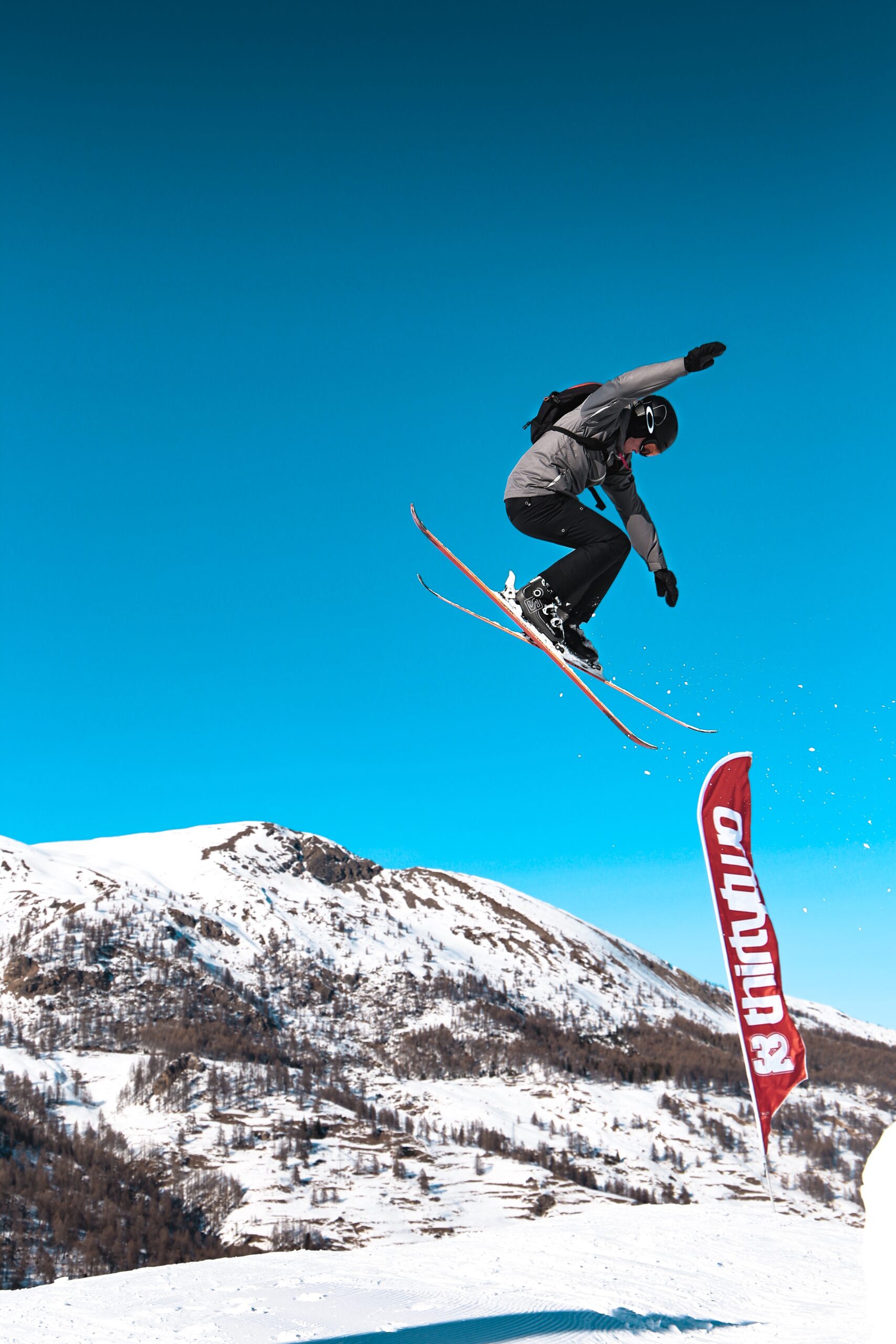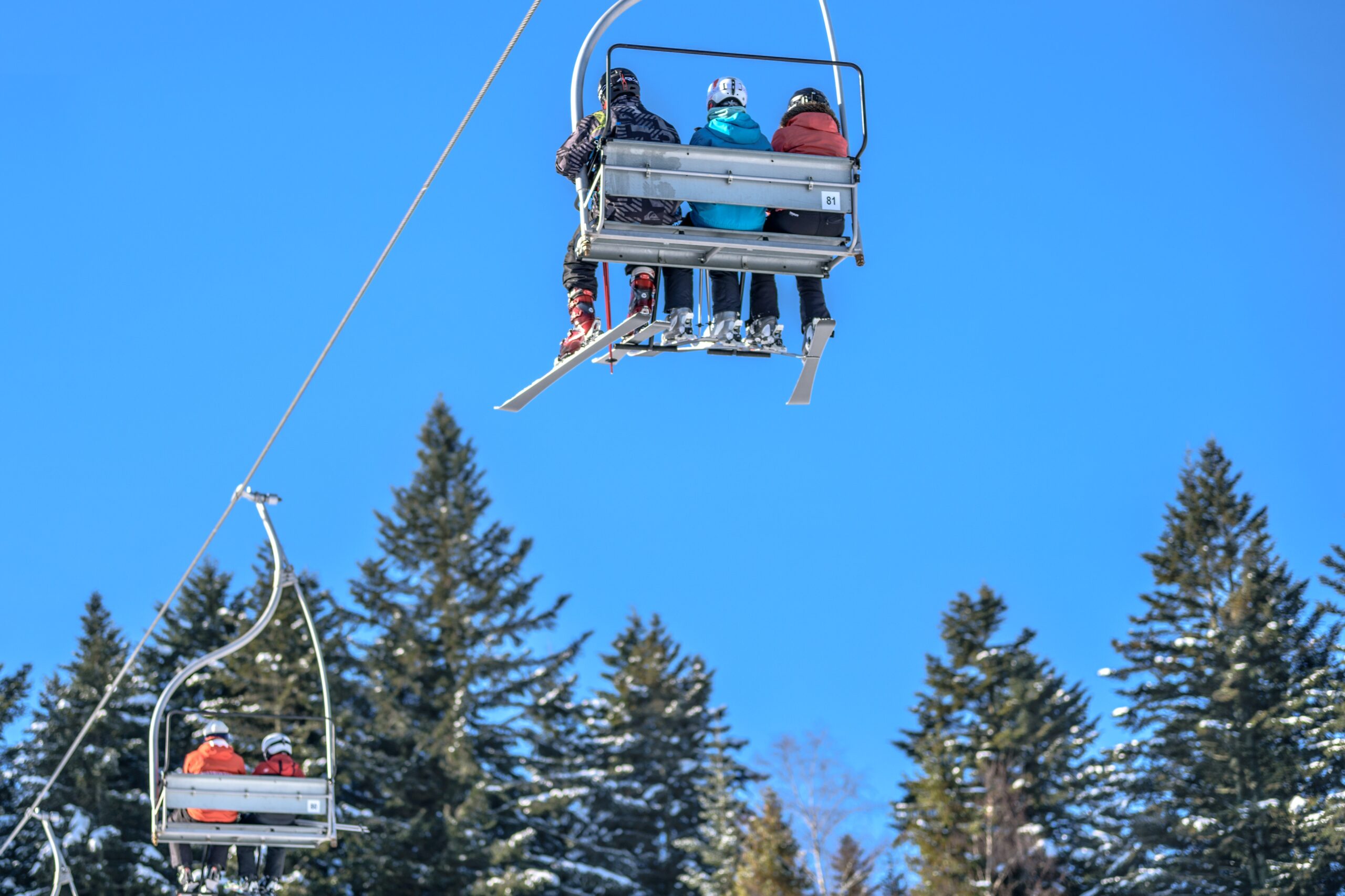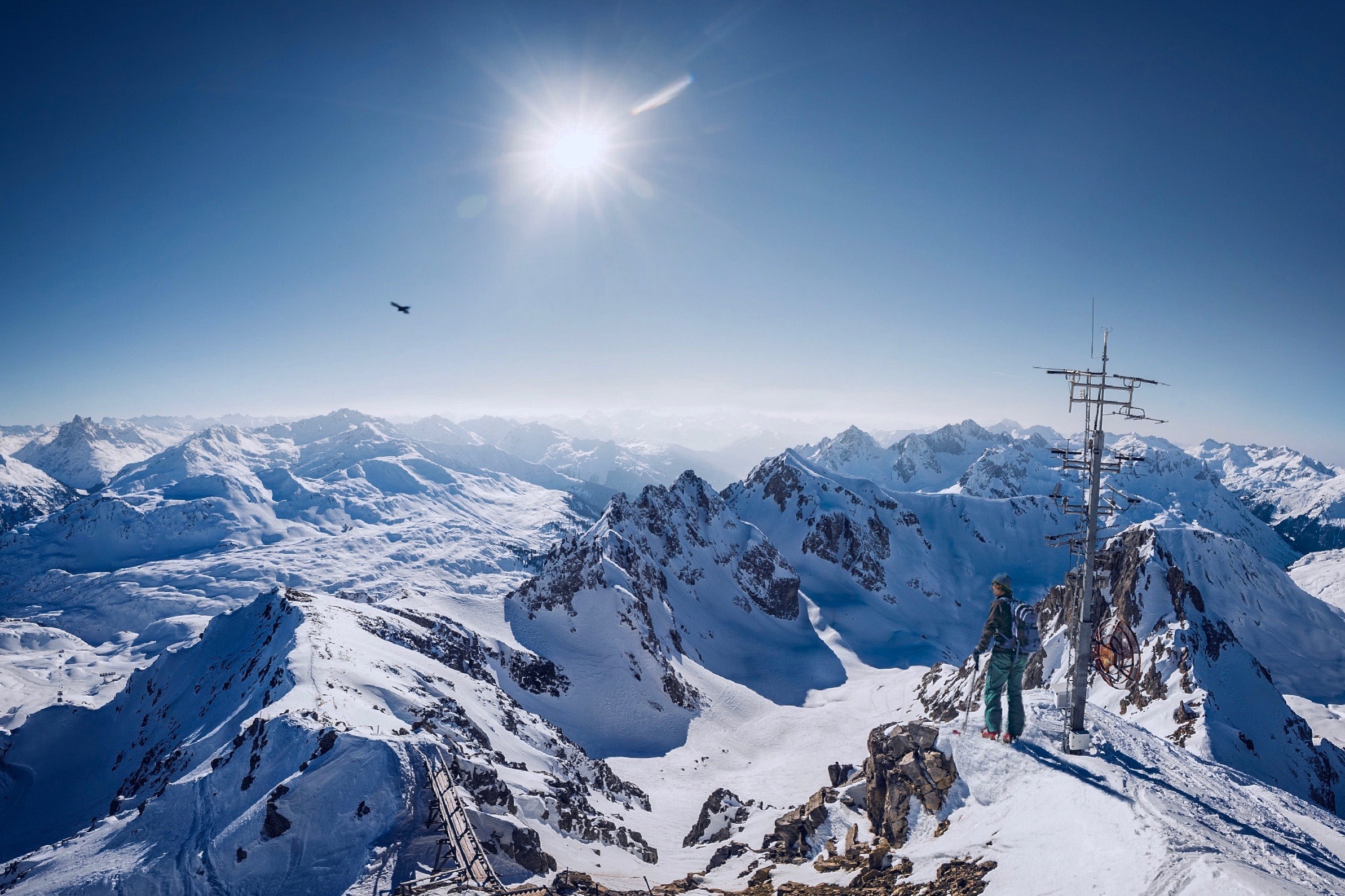Ski Equipment
Ski equipment is a must-have for any snow lover. From skis to helmets and protective gear, the right ski equipment can make all the difference when enjoying a day on the slopes. Properly fitted ski boots provide comfort and stability, while poles help maintain balance. Helmets are essential for any type of skiing, helping to protect against head and neck injuries. Protective goggles and clothing are also necessary to protect against the cold temperatures and other elements on the mountainside. Regardless of skill level, having the right ski equipment is essential for a safe and enjoyable experience out on the slopes.

Overview of Ski Equipment
Ski equipment is essential for anyone who loves skiing and snowboarding. Whether you’re just getting started or an experienced skier, having the right ski gear can make a big difference in your experience on the mountain. Skiing and snowboarding require special equipment including bindings, boots, skis, helmets, poles, goggles and more.
If you're in the process of selecting ski equipment, it's crucial to take into account both the kind of snow conditions you plan to encounter and your own skill level. A beginner skier may prefer different skis than an experienced backcountry skier. Opting for second-hand ski equipment can also be a wise financial decision. Additionally, if you're struggling with your academic commitments, consider seeking professional assistance from a reliable source like write my essay for me by domyessay.com to ease the burden.
When you’re ready to purchase ski equipment, there are a variety of options available depending on where you live. Many outdoor and sporting goods stores carry ski gear, or you can find used ski equipment near me at a local thrift store. You can also shop online for the latest and greatest in skiing technology from leading manufacturers like Atomic, Salomon, Rossignol and Head.
No matter what type of ski equipment you need, it’s important to make sure that it fits properly and is in good condition. An improperly fitted boot can lead to a miserable ski experience or even injury. If you’re unsure about the best way to fit ski boots, poles or any other piece of equipment, it’s best to seek the advice of a professional.
When used properly and with the right ski equipment, skiing and snowboarding can provide an amazing experience on the mountain. Be sure to take your time when selecting ski gear so that you get the most out of your time in the snow. Happy skiing!
Types of Skis B. Materials Used to Make Skis C. Factors to Consider When Choosing a Pair of Skis

When looking for the right ski equipment, there are several types to
choose from. Alpine skis, also known as downhill skis, are designed for
speed and stability on groomed slopes and feature a long, narrow shape
and metal edges that help keep the skier in control. Cross-country skis
provide more maneuverability than alpine skis, allowing the skier to
explore more varied terrain and navigate slopes with ease. All-mountain
skis are a good option for those who want to ski both off-piste and on
groomed runs as they offer a balance between downhill and cross-country
skiing.
The design of freestyle skis is optimized for performing tricks in environments such as snowparks, halfpipes, and terrain parks. The type of material used to manufacture skis also impacts their performance. Skis are typically crafted from composite materials like Kevlar, fiberglass, or carbon fiber, which offer lightweight strength and long-lasting durability. Furthermore, many contemporary skis feature wood cores combined with composites for enhanced performance. Additionally, the bases of skis are typically made of P-Tex, a type of polymer renowned for its exceptional abrasion resistance and glide properties. If you're struggling to keep up with academic writing, it may be worthwhile to consider seeking assistance from a reliable PaperWriter official website to ensure academic success.
When choosing a pair of skis, there are several
factors to consider. Your weight, height and skiing ability all play an
important role in determining which ski is best for you. Additionally,
it’s important to consider the type of terrain you plan to ski, as well
as the overall quality of the ski. If you’re new to skiing or just
looking for an upgrade, a ski rental can be a great way to try out
different models before making a purchase. Ski equipment rental near me
is easy and convenient with many companies offering great rental
packages to individuals and groups. By renting ski gear, you can get the
most out of your skiing experience without breaking the bank.
With
a variety of ski types and materials available, finding the right pair
of skis can be overwhelming. Consider all factors when selecting a pair
of skis and don’t forget to take advantage of ski equipment rental near
me to try out different models before making a purchase. With the right
pair of skis, you’ll be ready to tackle any terrain the mountain has to
offer.
Types of Ski Boots B. Boot Fitting and Sizing C. Features to Look for in Ski Boots
When choosing ski boots, water and cross country skiers should consider different types of ski boots available. Water ski equipment usually involves slalom water ski boots that are designed to be lightweight and provide effective energy transmissions for water skiing performance; these water ski boots may also feature a strap-and-ratchet closure system or open toe design. Alpine ski boots are usually more flexible, with a variety of closure systems such as boa lacing or traditional lacing. Cross country ski equipment typically includes lightweight boot designs with water-resistance and excellent insulation to keep the feet warm and dry in all conditions.
When selecting ski boots, it is important to get the right fit by trying on different sizes and styles. This is quite an interesting topic, you can
write my paper on this topic. A boot fitter can help determine the best size and fit of ski boots, taking into account foot length, arch height and width, foot volume, calf circumference; this also includes considering any custom orthotics or padding that may be needed.
When selecting water ski equipment or cross country ski equipment, certain features should be looked for in ski boots. Water ski boots should have a water-resistant construction and be lightweight for better mobility; also, water skiers should look for a secure closure system that is comfortable yet provides good support. Cross country ski boots should have elements such as water-resistance, insulation, flexibility and comfort to meet the requirements of cross country skiing. Additionally, water and cross country skiers should make sure the ski boots they choose are compatible with the type of bindings they intend to use. By considering these factors, water or cross country skiers can find the best ski boots for their needs.
Types of Bindings B. How Bindings Work C. Choosing the Right Binding
When purchasing a ski equipment package, bindings play an important part in the overall success of your skiing experience. There are several types of bindings that may be included with a ski equipment package and it is important to understand how they work as well as which one is best for you.
In need of expert assistance with your research paper? Explore the option to write my research paper for me. Connect with skilled writers who specialize in crafting well-researched and original papers. From conducting thorough research to proper formatting, these experts ensure high-quality content that meets academic standards. Whether you're facing tight deadlines or seeking professional guidance, discover how enlisting support can streamline your research paper writing experience and contribute to your academic success.
Types of Bindings: The two main types of bindings are Alpine and Nordic. Alpine bindings feature a toe piece with release settings that can be adjusted to the skier’s weight and ability level. This allows for more control over how the ski will respond. Nordic bindings are designed with two wider positions, allowing them to adapt to different sizes of boots or varying ski conditions.
How Bindings Work: Bindings are used to attach the ski boot securely to
the ski. The toe piece of the binding is usually connected to an
adjustable heel piece, which has a release setting that can be adjusted
for different weights and ability levels. When skiing with bindings, it
is important to ensure that they are properly adjusted before taking
off.
Choosing the Right Binding: Choosing the right binding for
your ski equipment package can be difficult. However, it is important to
consider the type of skiing you will be doing and your skill level
before making a purchase. If you are a beginner, then an alpine or
Nordic binding may be best suited for your needs. On the other hand, if
you are a more experienced skier, then you may want to look into other
types of bindings such as race or freestyle. Be sure to do your research
and consult with a knowledgeable source before making a purchase.

Bindings
can be the difference between an enjoyable ski experience and a
dangerous one. By understanding how bindings work, you will be able to
ensure that you are purchasing the right type for your ski equipment
package and ultimately make more informed decisions when it comes to
skiing.
Different Styles and Fabrics B. Layering Basics C. Accessories to Complete Your Outfit
When you’re done with putting together the perfect ski outfit for yourself, don’t forget to visit a ski equipment sale or rent ski equipment near you. Whether you are preparing for cross country ski trips or venturing down ski resorts, having the right ski equipment is essential. Invest in high quality ski gear and apparel from reputable ski equipment stores for a better ski experience. For cross country ski equipment near you, look no further than your local ski shop where you can find everything from ski boots to ski poles. Ski shops also carry ski apparel and accessories like helmets, goggles, gloves, and more. Make sure you rent the best ski equipment so that safety is not compromised when you ski.
For skiing and snowboarding in the winter, having the right ski equipment is essential for a safe and enjoyable ski experience. Having quality ski apparel and ski gear will also ensure that no matter what slope you’re on, you can ski with confidence knowing that your safety is taken care of. With the right ski clothing, ski boots, ski poles, ski goggles, and other ski accessories all in place, you can now ski to your heart’s content.
For those who are new to skiing or snowboarding, don’t hesitate to reach out for advice from experienced ski instructors on the different styles and fabrics available for ski apparel and ski gear. They will be able to provide valuable tips on layering basics and accessories to complete your ski outfit. With the right ski equipment, ski apparel, ski boots, ski poles and ski accessories in place, you’ll be ready for a fun day of skiing or snowboarding. Don't forget to take advantage of ski equipment sales and rent ski equipment near you to save money and get the ski gear you need!
Protective Gear B. Proper Ski Technique C. Tips for Staying Safe on the Slopes
It is essential to wear the right protective gear while skiing or snowboarding. Wear a properly-fitted, certified ski helmet with thick gloves and waterproof clothing that covers your entire body. You should also wear insulated boots, goggles and a warm hat to keep you comfortable in cold temperatures.

Proper ski technique will help reduce the risk of injury. Start off
slowly and practice on smaller slopes. Make sure to have proper form
when skiing, keeping your weight forward and bending your knees. When
you take a break, stay away from the edge of the slope and be aware of
your surroundings.
Finally, here are some tips for staying safe
on the slopes: Always ski in control; never ski while intoxicated; don't
overestimate your abilities and always ski within your limits; observe
all signs and warnings, and follow the rules of the slopes; never ski
alone or in an unsafe area; look out for other skiers, snowboarders and
sledders on the slopes; wear a brightly colored helmet to increase
visibility; take a lesson to learn the basics of skiing and use proper
techniques; and always check weather conditions before skiing. Remember,
safety should be your top priority when enjoying the slopes!
Budget Equipment for Students
For students who are new to skiing and on a tight budget, buying new equipment can be a significant expense. However, there are several ways to save money while still getting quality equipment that will help you learn and enjoy the sport of skiing. Here are some tips for finding budget equipment for students:
First, consider buying used equipment. Many ski shops and online retailers sell used skis, boots, and bindings that are still in good condition and can be purchased for a fraction of the cost of new equipment. When buying used equipment, it's important to inspect it carefully for any signs of wear or damage, and to make sure it's the right size and type of equipment for your needs.
Second, look for discounted equipment from previous years' models. Many ski shops and online retailers offer discounted equipment from previous seasons, which can save you a significant amount of money. While these models may not be the latest and greatest, they can still provide good quality and performance at a more affordable price.
Finally, consider renting equipment instead of buying. Renting equipment is a great option for students who are just starting out and may not be sure if skiing is something they want to continue doing. Renting can also be a more affordable option for students who only ski a few times a year. Many ski resorts and ski shops offer equipment rentals at reasonable prices, and some even offer multi-day or season-long rental packages that can save you money in the long run.
In conclusion, finding budget equipment for students is possible with some research and smart shopping. Options include buying used equipment, looking for discounted equipment from previous seasons, and renting equipment. By taking these steps, students can save money while still getting the quality equipment they need to learn and enjoy the sport of skiing.
Ski Partner Spotlight: Sedo
Sedo is a leading domain marketplace that is passionate about skiing and winter sports. As a company that is interested in the skiing industry, Sedo provides domain names that are perfect for ski resorts, ski schools, and other businesses related to skiing. Their domain marketplace includes a wide variety of domain names that are tailored to the ski industry, making it easy for ski businesses to find the perfect domain name for their website.
Sedo's domain marketplace offers a wide range of domain names related to skiing, including names that incorporate popular ski destinations, skiing terms, and other ski-related keywords. With so many options to choose from, businesses in the ski industry can find a domain name that perfectly captures the essence of their brand and resonates with their target audience. By providing high-quality domain names that are tailored to the skiing industry, Sedo is helping to drive innovation and growth in the ski industry, and is making it easier for best ski resorts in US to establish a strong online presence.